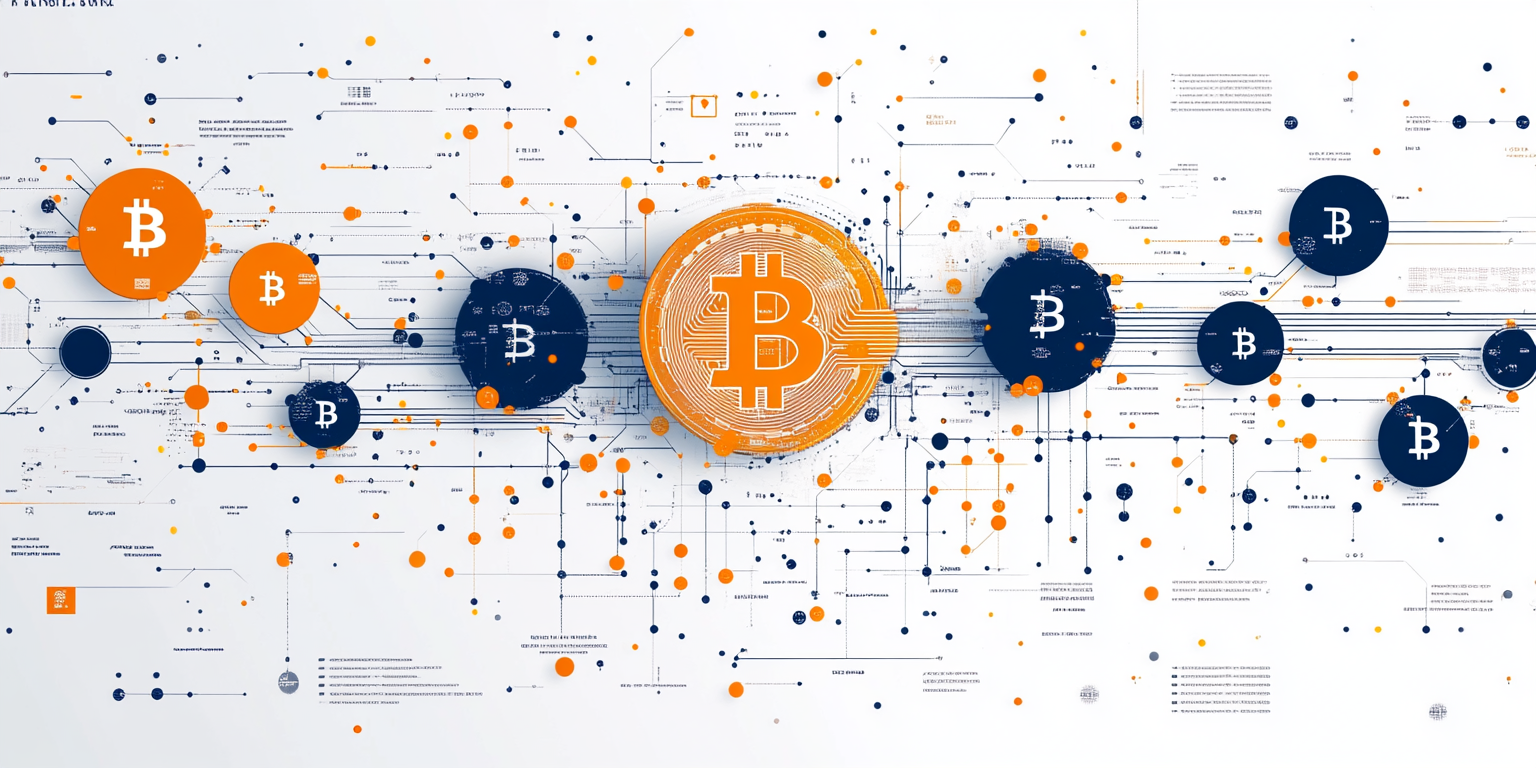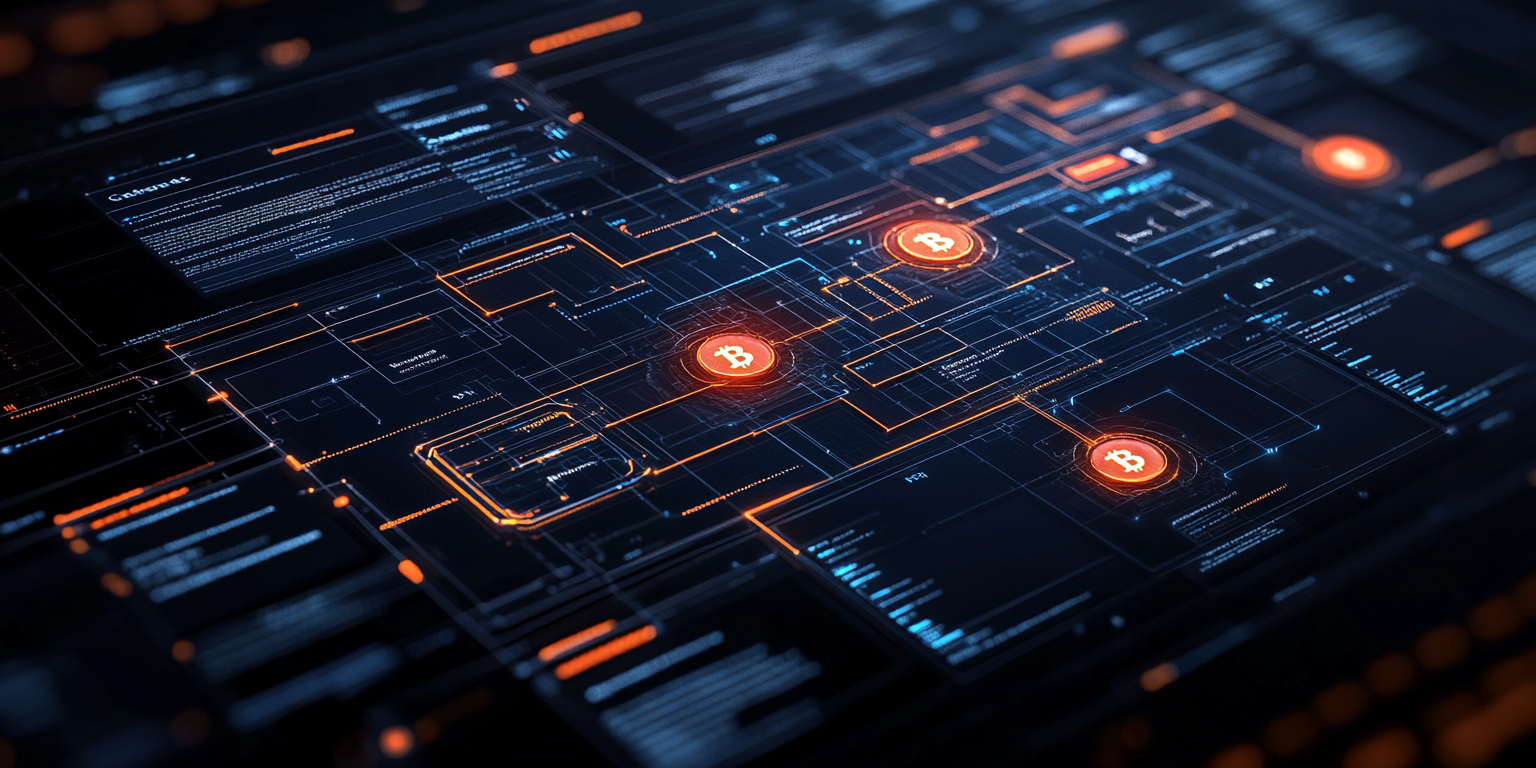Bitcoin Ordinals 2025: The Complete Beginner's Guide

Table of Contents
- What Are Bitcoin Ordinals: Explained Simply
- Ordinal Theory: The Foundation of Ordinals Technology
- How Bitcoin Ordinals Work
- Bitcoin Ordinals vs NFTs: Key Differences
- Best Bitcoin Ordinals Wallets in 2025
- How to Create Your Own Bitcoin Ordinal (Step-by-Step)
- Leading Marketplaces for Ordinals
- BRC-20 Tokens: The New Standard on Bitcoin
- Most Valuable Ordinals Collections
- Advantages and Disadvantages of Bitcoin Ordinals
- The Future of Bitcoin Ordinals: 2025-2026 Predictions
- Frequently Asked Questions
What Are Bitcoin Ordinals: Explained Simply
Bitcoin Ordinals are a revolutionary technology that transforms satoshis (the smallest units of Bitcoin) into unique digital collectibles. Essentially, they're a way to attach unique data to individual satoshis, creating something similar to NFTs but directly on the Bitcoin blockchain.
Important to understand: One Bitcoin consists of 100,000,000 satoshis . Each satoshi can be numbered and transformed into a unique digital asset.
Bitcoin ⟷ Satoshi Converter
1 BTC = 100,000,000 Satoshi | 1 Satoshi = 0.00000001 BTC
- Images
- Text
- Audio
- Video
- Even mini-games
The emergence of Bitcoin Ordinals in early 2023 was made possible by the Taproot upgrade, which significantly expanded Bitcoin's capabilities for processing complex scripts.
Ordinal Theory: The Foundation of Ordinals Technology
The concept of Ordinals is based on ordinal theory, proposed by developer Casey Rodarmor in early 2023. This theory offers a system that assigns sequential numbers to each satoshi at the moment it's mined, giving each one a unique identifier.
Imagine numbering every grain of sand on a beach — that's roughly how ordinal theory works for Bitcoin:
- The first satoshi mined in Bitcoin's genesis block has ordinal number 0
- Subsequent satoshis are numbered sequentially
- This numbering allows for tracking individual satoshis and associating them with additional data. SO EASY 😉

It's important to note that ordinal theory doesn't change Bitcoin's fundamental mechanics or security. It simply provides a method for tracking and identifying individual satoshis, opening new possibilities for using the network beyond economic transactions.
How Bitcoin Ordinals Work
The functionality of Bitcoin Ordinals is based on two key components: ordinal numbers and on-chain data storage.
Ordinal Numbers
Ordinal numbers are the foundation of Ordinals technology. Each satoshi receives a unique number based on its position in the sequence of mined Bitcoin. This allows:
- Uniquely identifying each satoshi
- Tracking specific satoshis as they move
- Transforming ordinary satoshis into unique digital assets
On-chain Data Storage
Unlike most NFT collections, Bitcoin Ordinals store all their data directly on the Bitcoin blockchain. This is called on-chain storage and provides:
- The highest degree of reliability and data preservation
- Complete transparency — anyone can verify the data
- Immutability — once created, an Ordinal cannot be changed
// Example of a Bitcoin Ordinal structure (simplified)
{
"id": "5c1d3...",
"number": 1234567890,
"content_type": "image/png",
"content": [image bytes],
"timestamp": 1677123456
}However, on-chain storage also has its challenges related to blockchain size and scalability. For example, adding a large image as an Ordinal increases the blockchain size, raising concerns about the long-term sustainability of this technology.
Bitcoin Ordinals vs NFTs: Key Differences
Bitcoin Ordinals are often compared to NFTs, as both technologies represent unique digital assets. However, there are significant differences between them:
| Feature | Bitcoin Ordinals | Traditional NFTs |
|---|---|---|
| Blockchain | Bitcoin only | Ethereum and other networks |
| Data Storage | Fully on-chain | Metadata typically off-chain |
| Creation | Direct attachment of metadata to satoshis | Using smart contracts |
| Durability | Guaranteed by Bitcoin's immutability | Depends on smart contracts and off-chain solutions |
| Royalties | Not supported | Supported on many platforms |
| Programmability | Limited | High |
Interesting fact: Unlike many NFTs where the image might be stored on third-party servers, Bitcoin Ordinals contain all data directly on the blockchain, making them more resistant to data availability issues.
Bitcoin Ordinals offer an unprecedented level of durability and security, making them ideal for long-term storage of valuable digital assets. On the other hand, they lack some features of traditional NFTs, such as programmability and royalty support.
Best Bitcoin Ordinals Wallets in 2025
Working with Bitcoin Ordinals requires specialized wallets that support this technology. Here are the best options for 2025:
1. Phantom
Phantom has established itself as one of the best wallets for working with Bitcoin Ordinals thanks to its reliability and ease of use:
- Years of experience: Over 3 years in the market with a user base of 2.7+ million
- Multi-platform: Available as a browser extension and mobile apps (iOS and Android)
- Educational content: Extensive materials for beginners on Bitcoin and Ordinals
- Built-in features: Support for BTC transactions, Ordinals, and BRC-20 tokens
- Exchange integration: Direct access to buying and selling through Moonpay, Robinhood, and PayPal
2. Xverse
Xverse is another powerful wallet with broad support for Bitcoin Ordinals:
- Comprehensive support: Works with BTC, Ordinals, BRC-20 tokens, and Stacks assets
- Bitcoin staking: Ability to earn up to 10% annually when staking BTC
- Open source: Transparent development with the possibility of code audit
- Intuitive interface: Simple design suitable even for beginners
3. UniSat
UniSat is a pioneer in the field of BRC-20 and Bitcoin Ordinals:
- First mover: Launched on April 23, 2023, it was the first wallet for BRC-20
- Built-in marketplace: Decentralized marketplace for buying and selling BRC-20 tokens
- Open source: Complete development transparency
- Specialized tools: Optimized specifically for working with Ordinals
4. Ordinals Wallet
Ordinals Wallet is a specialized wallet created specifically for Bitcoin Ordinals:
- Ordinals-focused design: Built from the ground up to support efficient management of Ordinals NFTs
- Launched in February 2023: Has solid experience working with Ordinals since the technology's inception
- Advanced security features: Two-factor authentication, cold storage options, and multi-signature support
- Planned features: Continuously adding new capabilities for creating, sending, and trading Ordinals
5. Hiro Wallet
Hiro Wallet is also worth attention:
- Early access: Launched the Ordinals testnet on February 14, 2023
- Dedicated "Collectibles" section: Separate section for storing Ordinals
- High level of security: Reliable protection for storing and trading digital assets
- Active development: Regular updates to improve user experience
Tip: When choosing a wallet for Bitcoin Ordinals, pay attention to security, ease of use, and support for features you need, such as built-in marketplaces or exchange capabilities.
How to Create Your Own Bitcoin Ordinal (Step-by-Step)
Creating a Bitcoin Ordinal (a process known as "inscribing") requires several steps. Here's a detailed guide:
Step 1: Set Up a Compatible Wallet
Start by installing a wallet that supports Bitcoin Ordinals. Recommended options:
- Phantom
- Ordinals Wallet
- Xverse
Step 2: Acquire Bitcoin
Make sure you have enough Bitcoin to cover:
- The cost of the satoshi itself
- Transaction fees (can be significant depending on network congestion)
- Inscription service fees (if using one)
Step 3: Choose an Inscription Service
In 2025, several platforms simplify the process of creating Ordinals:
- Gamma.io — popular platform with a user-friendly interface
- Ordinals Bot — automated service for creating Ordinals
- UniSat — offers comprehensive tools for working with Ordinals
Step 4: Prepare Your Content
Decide what you want to inscribe:
- Image (PNG, JPEG, GIF, etc.)
- Text
- Audio
- Video (within size limitations)
Pay attention to file size limitations and supported formats for your chosen platform.
Step 5: Complete the Inscription Process
Follow these steps to inscribe your Ordinal:
- Connect your wallet to the inscription service
- Upload your content or enter your text
- Pay the required fee from your crypto wallet
- Wait for the transaction to be confirmed on the Bitcoin blockchain
Step 6: Verify Your Ordinal
Once the transaction is confirmed:
- Check your wallet to view your new Ordinal
- Verify that all data appears correctly
- Your Bitcoin Ordinal is now permanently stored on the blockchain!
Important: The inscription process can be expensive and time-consuming due to Bitcoin's transaction fees and confirmation times. Plan accordingly and be prepared for potential delays during network congestion.
Leading Marketplaces for Ordinals
To buy, sell, or trade Bitcoin Ordinals, you'll need access to specialized marketplaces. Here are the top platforms in 2025:
1. Magic Eden
Magic Eden has established itself as a leading marketplace for Bitcoin Ordinals:
- High volume: One of the most active trading platforms for Ordinals
- User-friendly interface: Easy navigation and search functionality
- Verified collections: Helps users identify authentic Ordinals
- Multi-chain support: Also supports NFTs on other blockchains
2. Gamma.io
Gamma.io offers a comprehensive platform for Ordinals:
- All-in-one solution: Create, buy, sell, and manage Ordinals in one place
- Creator royalties: One of the few platforms supporting royalties for creators
- Analytics tools: Detailed market data and collection statistics
- Built-in wallet integration: Seamless experience with supported wallets
3. Ordinals Marketplace
Ordinals Marketplace is a dedicated platform focused solely on Bitcoin Ordinals:
- Specialized focus: Built specifically for Ordinals trading
- Low fees: Competitive fee structure compared to other marketplaces
- Simple interface: Straightforward design for easy navigation
- Direct wallet connection: Secure trading through wallet integration
4. UniSat Market
UniSat Market combines wallet functionality with a robust marketplace:
- Integrated experience: Wallet and marketplace in one platform
- BRC-20 focus: Specialized in both Ordinals and BRC-20 tokens
- Active community: Vibrant ecosystem of traders and collectors
- Frequent updates: Continuously improving features and user experience
How Ordinals Marketplaces Work
Ordinals marketplaces utilize a Partially Signed Bitcoin Transaction (PSBT) model for trading Bitcoin NFTs. This approach, introduced through Bitcoin Improvement Proposal 174 (BIP-174), streamlines and simplifies multi-party transactions while preserving Bitcoin blockchain security.
The trading process typically follows these steps:
- Transaction Creation: A PSBT file is created with transaction details
- Signing: Parties sign the transaction to approve it
- Finalization: Once all signatures are collected, the transaction is finalized
- Broadcasting: The fully signed transaction is broadcast to the Bitcoin network
This process differs significantly from NFT marketplaces on Ethereum, which rely on smart contracts for automated transactions.
BRC-20 Tokens: The New Standard on Bitcoin
BRC-20 is an experimental token standard for creating fungible tokens on the Bitcoin blockchain, inspired by Ethereum's ERC-20 standard. This innovation has further expanded Bitcoin's capabilities beyond Ordinals.
What Are BRC-20 Tokens?
BRC-20 tokens represent a novel approach to asset tokenization on Bitcoin:
- Created in March 2023 by blockchain analyst Domo
- Uses Ordinals inscription mechanism to mint and transfer tokens
- Doesn't require smart contracts, unlike ERC-20 tokens
- Created by inscribing JSON files onto individual satoshis
- Compatible with Bitcoin Taproot-enabled wallets
BRC-20 vs Bitcoin Ordinals
While related, BRC-20 tokens and Bitcoin Ordinals serve different purposes:
- Ordinals are like unique digital trading cards, each one special and non-fungible
- BRC-20 tokens are more like creating your own cryptocurrency on Bitcoin, fungible and interchangeable
![BRC-20 vs Ordinals